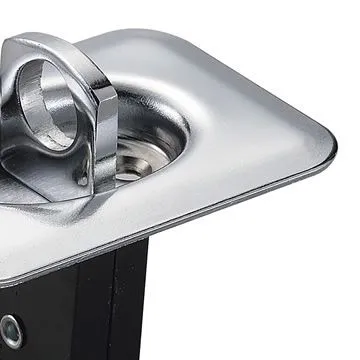10 月 . 18, 2024 12:56 Back to list
Steps to Install a Ceiling Access Panel Easily and Effectively
How to Install a Ceiling Access Panel
Installing a ceiling access panel is a straightforward yet essential home improvement task that can provide easy access to plumbing, electrical systems, or HVAC ductwork. Whether you’re looking to make routine maintenance more accessible or improve the aesthetic appeal of your ceiling, a well-installed access panel is a great solution. Here’s a step-by-step guide to help you install your ceiling access panel correctly.
Materials Needed
Before you begin, gather the following materials and tools
1. Ceiling access panel 2. Measuring tape 3. Drywall saw or utility knife 4. Level 5. Drill and screws (if applicable) 6. Stud finder 7. Safety goggles and dust mask
Step 1 Choose the Location
The first step in installing a ceiling access panel is to select its location. Consider where you need access for maintenance or repairs. Ensure that the area is clear of obstructions, such as light fixtures or ceiling joists, which may hinder the installation. Use a stud finder to locate the joists in your ceiling; it’s ideal to mount the panel in an area between the joists to ensure proper support.
Step 2 Mark the Outline
Once you have selected the location, it’s time to mark the outline of the access panel on the ceiling. Use a measuring tape to ensure that the panel is centered in the space. Trace around the perimeter of the panel with a pencil, leaving an outline on the ceiling for cutting. Double-check your measurements before proceeding to avoid any mistakes.
Step 3 Cut the Opening
With your outline in place, use a drywall saw or utility knife to carefully cut out the marked area of the ceiling. Make sure to wear safety goggles and a dust mask to protect yourself from debris and dust. Cut slowly and steadily, ensuring that you stay within the marked lines. Be cautious of any electrical wires or plumbing that may be hidden behind the drywall.
how to install a ceiling access panel

Step 4 Prepare the Panel
Before installing the access panel, ensure it is the correct size for the opening you’ve created. If it’s not an exact fit, you may need to trim it. Most access panels come with a framework that can be attached to the ceiling joists for added structural support. Follow the manufacturer’s instructions regarding the preparation of the panel.
Step 5 Install the Access Panel
Position the access panel into the opening. If it has a hinged door, ensure it opens in the direction that allows for easy access. If the panel requires screws, drill them into place to secure it against the ceiling. Use a level to make sure the panel is flush with the surrounding drywall. This step is crucial for maintaining a clean and professional look.
Step 6 Finish the Installation
After the access panel is secured in place, check the fit of the door or frame. It should open and close smoothly, providing easy access to the area behind the ceiling. If your access panel requires painting or finishing, now is the time to do that. Match it with the ceiling’s color for a cohesive look.
Step 7 Clean Up
Once everything is installed and in place, clean up any dust and debris caused by cutting the drywall. Ensure that all tools are stored away securely, and double-check that the access panel is functioning correctly. It should now offer you convenient access whenever you need to check on plumbing, electrical, or HVAC systems.
Conclusion
Installing a ceiling access panel is a simple project that can greatly enhance your home's functionality. By following these steps, you can successfully complete the installation yourself, saving money and time. Remember to prioritize safety throughout the process, and enjoy the benefits of easy access to crucial areas in your home. Whether you’re tackling maintenance work or simply looking for additional storage options, an access panel provides a practical solution for various needs.
-
Revolutionizing Interior Design with Ceilings t grid Suspended SystemNewsOct.29,2024
-
Revolutionizing Ceiling Design with ceiling access panel with Gypsum Tile WaterproofNewsOct.29,2024
-
Revolutionizing Interior Design with PVC Gypsum Ceiling: A Comprehensive GuideNewsOct.29,2024
-
Elevating Interior Design with High quality Mineral Fiber Ceiling TilesNewsOct.29,2024
-
Revolutionizing Interior Design with PVC Gypsum Ceiling: A Comprehensive GuideNewsOct.29,2024
-
Elevating Interior Design with High-Quality Mineral Fiber Ceiling Tiles: A Comprehensive GuideNewsOct.29,2024







